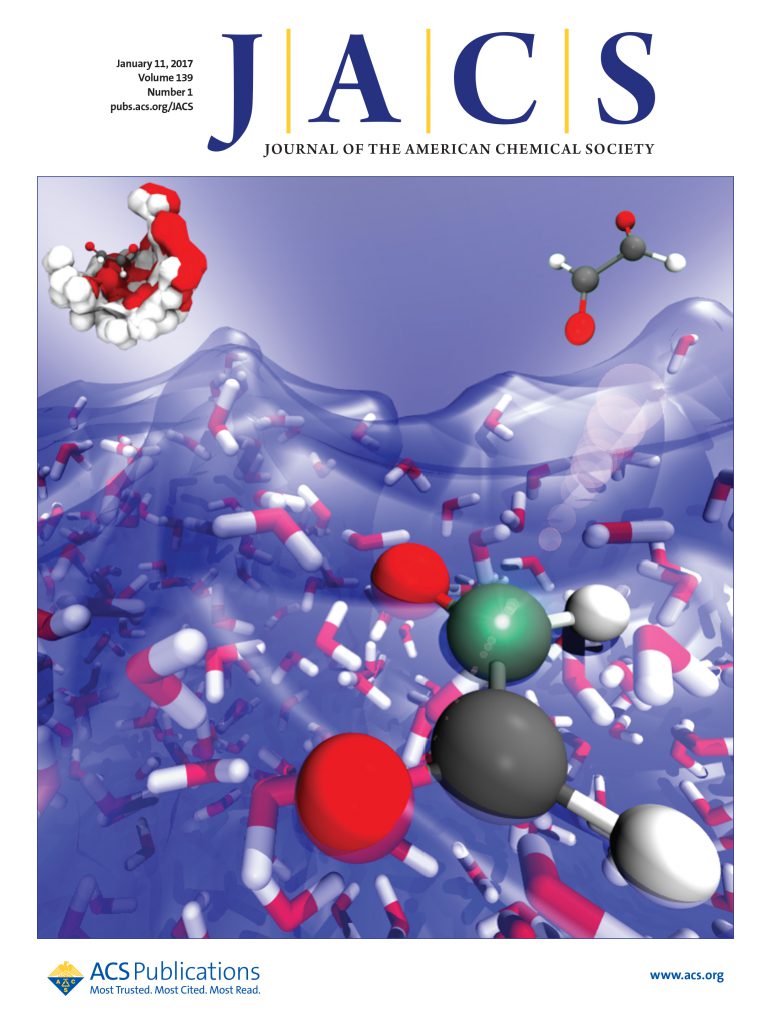Pyridine(diimine) Chromium η,1η3-Metallacycles as Precatalysts for Alkene-Diene [2 + 2] Cycloaddition
IF 14.4
1区 化学
Q1 CHEMISTRY, MULTIDISCIPLINARY
引用次数: 0
Abstract
The synthesis, characterization, and catalytic cycloaddition reactivity of aryl-substituted pyridine(diimine) (PDI) chromium ether complexes and alkene-diene derived metallacycles are described. The reduction of either (PDI)CrCl2 or (PDI)CrCl3 with sodium and catalytic amounts of naphthalene furnished the corresponding chromium THF or diethyl ether complexes. Exposure of the reduced chromium compounds to a mixture of butadiene and ethylene induced rapid oxidative cyclization and yielded isolable, thermally stable chromium η,1η3 trans-metallacycles. In the presence of pure butadiene, oxidative cyclization was also observed, and a η,1η3 diene–diene chromacycloheptane with vinyl substitution was isolated and crystallographically characterized. Reductive C(sp3)–C(sp3) elimination of the resulting vinylcyclobutane products was promoted by either one-electron oxidation or irradiation with visible light in the presence of diene or coordinating solvents such as THF. Under thermal catalytic conditions, the chromacycles converted butadiene and ethylene to a mixture of vinylcyclobutane arising from [2 + 2] cycloaddition and cis-1,4-hexadiene resulting from competitive hydrovinylation. Visible light irradiation at ambient temperature enabled selective catalytic [2 + 2] cycloaddition. Isotopic labeling studies with 13C-labeled ethylene established that the alkene–diene chromacycle is thermodynamically preferred over the diene–diene alternative and that both oxidative cyclization and reductive coupling steps are reversible. Visible light accelerated the reductive coupling step, while subsequent product displacement from the metal center occurs in the presence of excess diene.

吡啶(二亚胺)铬η,1η -金属环作为烯烃-二烯[2 + 2]环加成的预催化剂
介绍了芳基取代吡啶(二亚胺)(PDI)铬醚配合物和烯-二烯衍生金属环的合成、表征和催化环加成反应性。钠和萘的催化量使(PDI)CrCl2或(PDI)CrCl3还原得到相应的铬THF或二乙醚配合物。将还原后的铬化合物暴露于丁二烯和乙烯的混合物中,引起了快速的氧化环化,并产生了可分离的、热稳定的铬η、1η3反金属环。在纯丁二烯存在下,还观察到氧化环化反应,分离得到一个η,1η - 3二烯-二烯取代的乙烯基环庚烷,并对其进行了晶体学表征。通过单电子氧化或在二烯或配位溶剂(如四氢呋喃)存在下的可见光照射,促进了乙烯基环丁烷产物的还原C(sp3) -C (sp3)消去。在热催化条件下,铬环将丁二烯和乙烯转化为由[2 + 2]环加成产生的乙烯基环丁烷和由竞争加氢乙烯化产生的顺-1,4-己二烯的混合物。室温下可见光照射使选择性催化[2 + 2]环加成成为可能。用13c标记的乙烯进行的同位素标记研究表明,烯烃-二烯环在热力学上优于二烯-二烯替代环,并且氧化环化和还原偶联步骤都是可逆的。可见光加速了还原耦合步骤,而随后的产物从金属中心位移发生在过量二烯存在的情况下。
本文章由计算机程序翻译,如有差异,请以英文原文为准。
求助全文
约1分钟内获得全文
求助全文
来源期刊
CiteScore
24.40
自引率
6.00%
发文量
2398
审稿时长
1.6 months
期刊介绍:
The flagship journal of the American Chemical Society, known as the Journal of the American Chemical Society (JACS), has been a prestigious publication since its establishment in 1879. It holds a preeminent position in the field of chemistry and related interdisciplinary sciences. JACS is committed to disseminating cutting-edge research papers, covering a wide range of topics, and encompasses approximately 19,000 pages of Articles, Communications, and Perspectives annually. With a weekly publication frequency, JACS plays a vital role in advancing the field of chemistry by providing essential research.

 求助内容:
求助内容: 应助结果提醒方式:
应助结果提醒方式:


